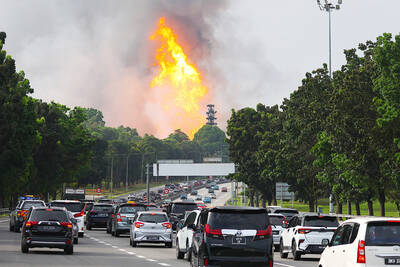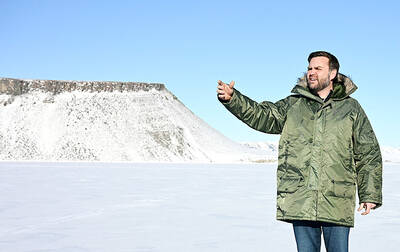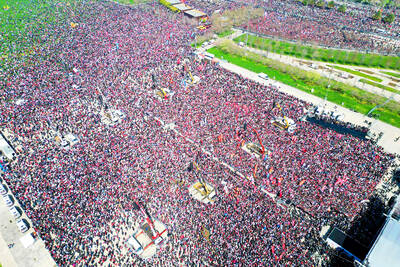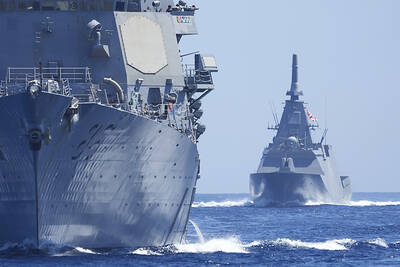A popular Internet video accusing Australians of opposing Japanese whaling because of racism while brutally killing animals such as kangaroos and dingoes drew sharp government criticism yesterday.
Australian Foreign Minister Stephen Smith condemned the video as he announced that Australia would this week deploy a ship to the Southern Ocean to gather evidence for possible legal action against Japan over its whaling program.
The 10-minute video, which has recorded more than 100,000 hits since being posted anonymously on the YouTube Web site, shows graphic images of Australians killing animals and of infamous racial riots at Cronulla beach in 2005.
It says Australians are opposed to Japanese whaling because of a racist ideology, and claims in English, with Japanese subtitles, that Australia holds the world record for mammal extinction.
"It is untasteworthy in the extreme, that's the kindest thing I can think to say about it," Smith told reporters. "Its general overtone, its general content, I absolutely condemn. It's anonymous, so that tells you something before we even start."
The video would not change Australia's opposition to Japanese whaling, but neither would it "in any way disturb or affect the very good relationship with Japan," he said.
Smith announced that the Oceanic Viking customs ship would leave Australia this week on a 20-day mission to monitor the Japanese whaling fleet in the icy waters of the Antarctic.
The ship's mission would be coordinated with aerial surveillance and aimed to gather video and photographic evidence for a potential international court case against Japan, he said.
Japan exploits a loophole in a 1986 international moratorium on commercial whaling to kill whales for what it calls scientific research, while admitting that the meat from the hunt ends up on dinner plates.

A fire caused by a burst gas pipe yesterday spread to several homes and sent a fireball soaring into the sky outside Malaysia’s largest city, injuring more than 100 people. The towering inferno near a gas station in Putra Heights outside Kuala Lumpur was visible for kilometers and lasted for several hours. It happened during a public holiday as Muslims, who are the majority in Malaysia, celebrate the second day of Eid al-Fitr. National oil company Petronas said the fire started at one of its gas pipelines at 8:10am and the affected pipeline was later isolated. Disaster management officials said shutting the

US Vice President J.D. Vance on Friday accused Denmark of not having done enough to protect Greenland, when he visited the strategically placed and resource-rich Danish territory coveted by US President Donald Trump. Vance made his comment during a trip to the Pituffik Space Base in northwestern Greenland, a visit viewed by Copenhagen and Nuuk as a provocation. “Our message to Denmark is very simple: You have not done a good job by the people of Greenland,” Vance told a news conference. “You have under-invested in the people of Greenland, and you have under-invested in the security architecture of this

UNREST: The authorities in Turkey arrested 13 Turkish journalists in five days, deported a BBC correspondent and on Thursday arrested a reporter from Sweden Waving flags and chanting slogans, many hundreds of thousands of anti-government demonstrators on Saturday rallied in Istanbul, Turkey, in defence of democracy after the arrest of Istanbul Mayor Ekrem Imamoglu which sparked Turkey’s worst street unrest in more than a decade. Under a cloudless blue sky, vast crowds gathered in Maltepe on the Asian side of Turkey’s biggest city on the eve of the Eid al-Fitr celebration which started yesterday, marking the end of Ramadan. Ozgur Ozel, chairman of the main opposition Republican People’s Party (CHP), which organized the rally, said there were 2.2 million people in the crowd, but

JOINT EFFORTS: The three countries have been strengthening an alliance and pressing efforts to bolster deterrence against Beijing’s assertiveness in the South China Sea The US, Japan and the Philippines on Friday staged joint naval drills to boost crisis readiness off a disputed South China Sea shoal as a Chinese military ship kept watch from a distance. The Chinese frigate attempted to get closer to the waters, where the warships and aircraft from the three allied countries were undertaking maneuvers off the Scarborough Shoal — also known as Huangyan Island (黃岩島) and claimed by Taiwan and China — in an unsettling moment but it was warned by a Philippine frigate by radio and kept away. “There was a time when they attempted to maneuver